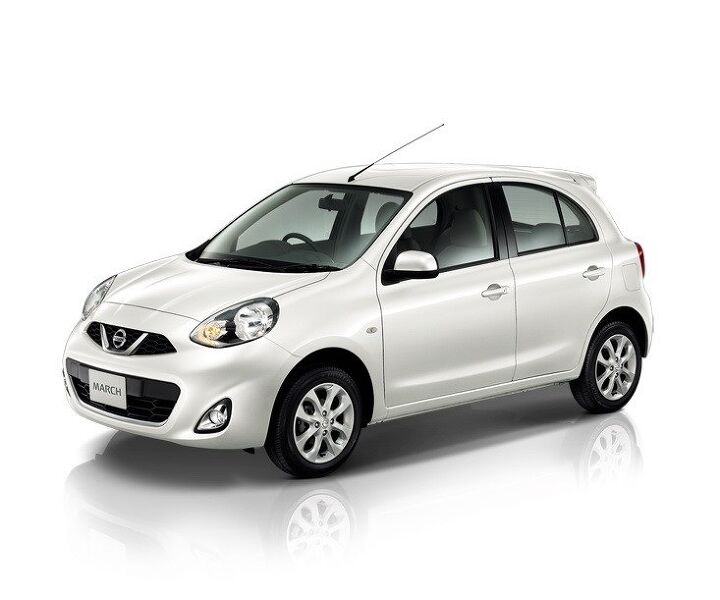Nissan Micra Solves Renault's Labor Problems

Folks who are not intimately familiar with the peculiarities of the European auto industry often call Renault a similar basket case as its French rival Peugeot. January through March, both are down in Europe, PSA (-15.3 percent) more than Renault (-8.3 percent), but the big difference is that Renault has a much wider international footprint. What’s more, Renault owns 44.3 percent of Nissan. This international footprint helps Renault solve problems in ways Peugeot can’t touch. For instance, by making Nissans.
In a statement, Nissan announced “that the replacement for the current Nissan Micra compact car will be manufactured at a Renault plant in Europe.” Of course, the official reason is not that Nissan comes to the aid of Renault, and helps it to solve its labor problems. Officially, “available capacity across the relevant plants in the Nissan manufacturing network is already planned to be fully utilized and led the company to look at alternatives within the Renault-Nissan Alliance.” Again, Peugeot PSA would love to have a partner that doesn’t know where to make all the cars it sells. PSA only has ailing Opel.
Starting in 2016, the Micra (in some markets sold as March) will be built at Renault’s plant in Flins near Paris. The Flins factory currently builds the Clio , which shares a platform with the Micra. “The next-generation Micra will share even more parts with the Clio,” Automotive News [sub] learned from French newspaper Les Echos.
With the move, the Micra will come back home to Europe, so to speak. In 2010, Micra production moved from Nissan’s Sunderland, England, plant to Chennai, in India. Nissan’s statement says that the Micra made in France “will be exported across Europe’s left-hand drive markets.” Meaning the large part of Europe where they drive on the right. The RHD cars built for driving on the left will continue to be built in India.

Bertel Schmitt comes back to journalism after taking a 35 year break in advertising and marketing. He ran and owned advertising agencies in Duesseldorf, Germany, and New York City. Volkswagen A.G. was Bertel's most important corporate account. Schmitt's advertising and marketing career touched many corners of the industry with a special focus on automotive products and services. Since 2004, he lives in Japan and China with his wife <a href="http://www.tomokoandbertel.com"> Tomoko </a>. Bertel Schmitt is a founding board member of the <a href="http://www.offshoresuperseries.com"> Offshore Super Series </a>, an American offshore powerboat racing organization. He is co-owner of the racing team Typhoon.
More by Bertel Schmitt
Latest Car Reviews
Read moreLatest Product Reviews
Read moreRecent Comments
- Groza George My next car will be a PHEV truck if I can find one I like. I travel a lot for work and the only way I would get a full EV is if hotels and corporate housing all have charging stations.I would really like a Toyota Tacoma or Nissan Frontier PHEV
- Slavuta Motor Trend"Although the interior appears more upscale, sit in it a while and you notice the grainy plastics and conventional design. The doors sound tinny, the small strip of buttons in the center stack flexes, and the rear seats are on the firm side (but we dig the ability to recline). Most frustrating were the repeated Apple CarPlay glitches that seemed to slow down the apps running through it."
- Brandon I would vote for my 23 Escape ST-Line with the 2.0L turbo and a normal 8 speed transmission instead of CVT. 250 HP, I average 28 MPG and get much higher on trips and get a nice 13" sync4 touchscreen. It leaves these 2 in my dust literally
- JLGOLDEN When this and Hornet were revealed, I expected BOTH to quickly become best-sellers for their brands. They look great, and seem like interesting and fun alternatives in a crowded market. Alas, ambitious pricing is a bridge too far...
- Zerofoo Modifications are funny things. I like the smoked side marker look - however having seen too many cars with butchered wire harnesses, I don't buy cars with ANY modifications. Pro-tip - put the car back to stock before you try and sell it.


































Comments
Join the conversation
For anyone interested, you can go nuts reading on the web about the reasons why some countries drive on the left, some on the right. Crackpot theories abound. But it does look like the Brits mandated driving on the left from 1835, and the French decided to do the opposite, as usual. And the US did the same as France. Virtually all early US cars had steering wheels on the right, but traffic drove on the right too. Sweden was that way until 1964. The Model T was the first US car to have LHD, all previous Fords were RHD. Gradually the other US manufacturers changed to LHD and by 1920 or so, all had changed. Who really cares? It is what it is. Now why are most power boats still RHD? Why are virtually all US road racing circuits clockwise, favoring RHD? Only the Shadow knows. Or really cares.
Nissan Micra Solves Renaut's Labor Problems: By way of future layoffs owing to a Micra-sized profit margin. Looks like a cross between previous gen Accent and a 500.